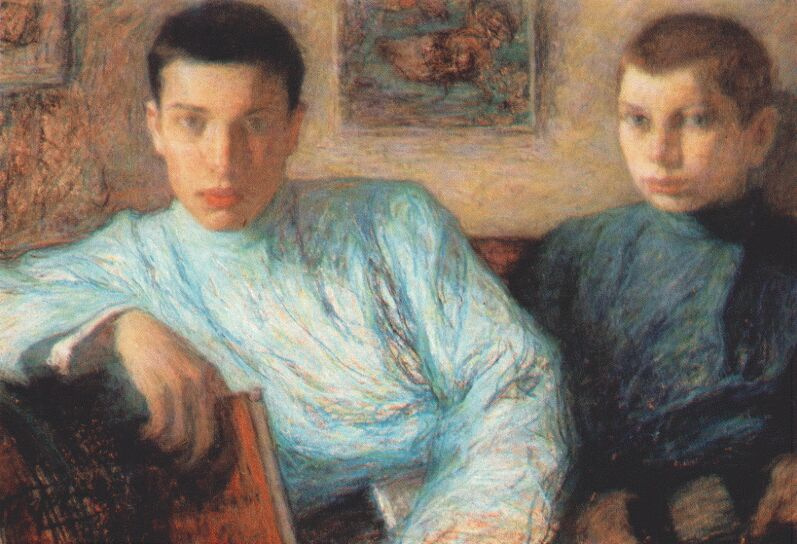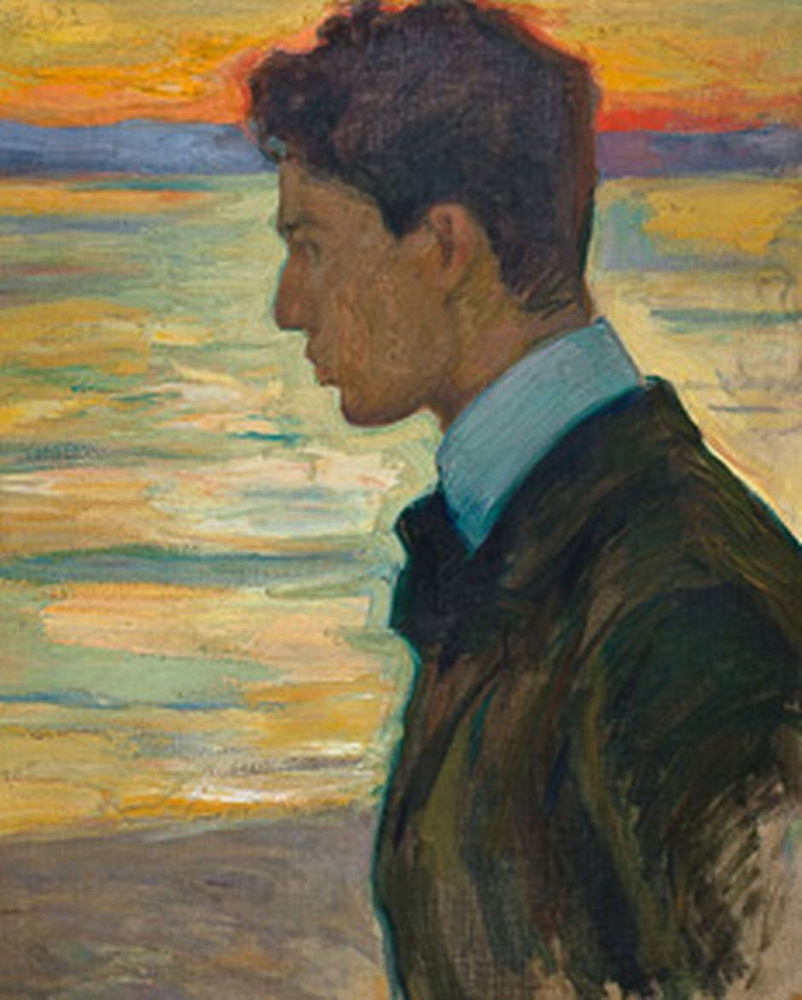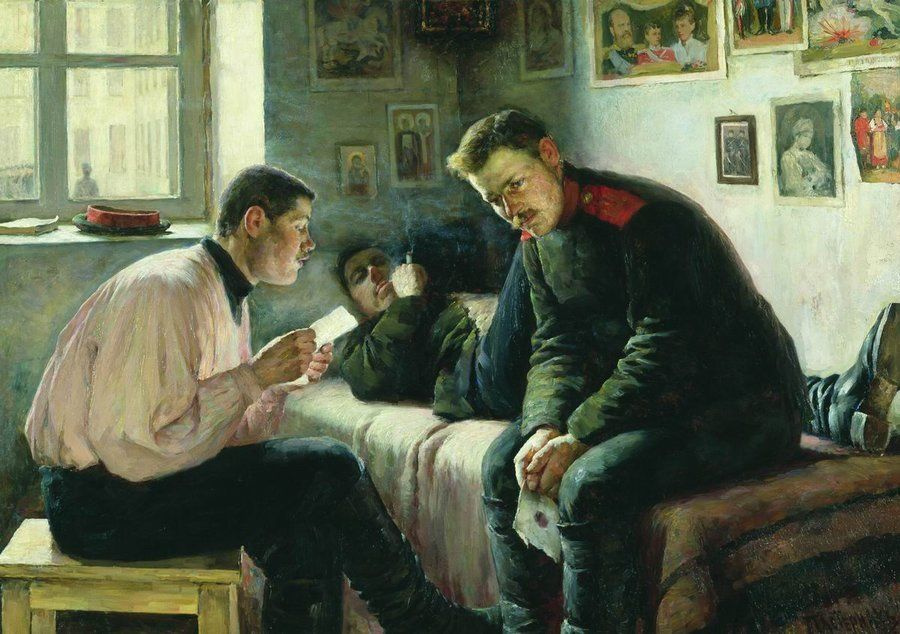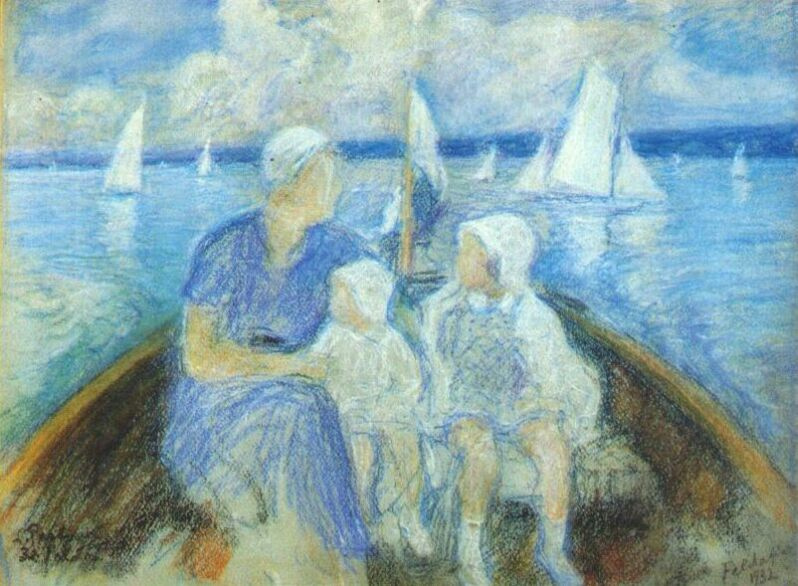Ему позировали Рубинштейн и Скрябин, Толстой и Горький, Мечников и Эйнштейн. Он славился как блестящий портретист и мастер иллюстрации. Его картины хранят крупнейшие музеи мира и сотни коллекционеров. Однако долгие десятилетия имя Леонида Пастернака было забыто. Возможно гениального отца заслонила тень гениального сына - поэта Бориса Пастернака.

“... his gigantic merits are not even appreciated in a hundredth part”
Boris Pasternak wrote about his father: “Dad! But, after all, this is a sea full of tears, sleepless nights and, if I could write it down, it’d take volumes, volumes, volumes. Surprise at the perfection of his skill and gift, at the ease of his work (jokingly and playfully, like Mozart), at the multiplicity and significance of what he had done — the surprise is all the more lively and hot, since comparisons on all these points shame and humiliate me. I wrote to him that one should not be offended that his gigantic merits were not even appreciated in a hundredth part, while I have to burn out with shame when my role is so monstrously inflated and overestimated... I wrote to dad... which, in the final analysis, triumphs yet he, he, who lived such a true, nonfictional, interesting, full, rich life, partly in his blessed 19th century, partly in loyalty to it, and not in the wild, devastated the unreal and fraudulent twentieth...”
Descendant of King David
Leonid Pasternak was born in April 1862 in Odesa. He was the youngest child in a large Jewish family. Apparently, out of an excess of feelings, his parents named him two names at once — Abram and Isaac. However, they only called him Leonid at home. On this occasion, the artist even had to write explanatory notes in official institutions. By the way, the family name originally sounded not Pasternak, but Posternak.
Das Porträt der Mutter
1900-er
Posternak the Elder kept an inn, the mother ran the house, she was an illiterate, but intelligent and strong-willed woman. The Pasternaks believed that they were descendants of the Abarbanels. It is one of the oldest and most respected Jewish families, which descended from King David.

Janitor the patron
The parents dreamed that their son would become “a pharmacist, or a doctor, or, at worst, ‘an intercessor on business’,” as the artist later recalled. But most of all, the boy strove to draw, and he had to do it secretly from his father and mother. The most readily available medium was charcoal.
The first success came to him at the age of six. The janitor instructed a talented boy to sketch several pictures on hunting themes with charcoal. The customer paid five kopecks for each painting and decorated the janitor’s room with them. Subsequently, Leonid Pasternak would call this janitor “my Lorenzo Medici”. By the way, the love of sketches with charcoal and pencil would remain with Leonid Pasternak for his life.
The parents dreamed that their son would become “a pharmacist, or a doctor, or, at worst, ‘an intercessor on business’,” as the artist later recalled. But most of all, the boy strove to draw, and he had to do it secretly from his father and mother. The most readily available medium was charcoal.
The first success came to him at the age of six. The janitor instructed a talented boy to sketch several pictures on hunting themes with charcoal. The customer paid five kopecks for each painting and decorated the janitor’s room with them. Subsequently, Leonid Pasternak would call this janitor “my Lorenzo Medici”. By the way, the love of sketches with charcoal and pencil would remain with Leonid Pasternak for his life.
Porträt von Schaljapin
30.12.1913




Left to right: A. P. Novitsky, L. N. Tolstoy, R. M. Rilke, B. L. Pasternak
Favourite student of von Herterich
The parents wanted to see their son as a doctor or lawyer. Leonid Pasternak entered the Faculty of Medicine at Moscow University. Michelagelo himself would have envied him. But what attracted the great sculptor repelled our hero — the anatomy. Leonid Pasternak could not overcome his aversion to corpses, but he studied that part of anatomy that an artist needed. Then he transferred to the law faculty of Moscow University, and then to Odesa, or rather Novorossiysk University. Odesa University (the only one in the empire) gave students the right to travel abroad. Pasternak used this right and went to enter the competition at the Munich Royal Academy. And he passed as the number one! He studied in the class of the famous draftsman Ludwig von Herterich.

Self-portrait of Professor Ludwig von Herterich.
His drawing experiments were so good that the teacher did not correct them and allowed them to be taken home. In Moscow, the works of Pasternak were immediately snapped up by collectors. Pasternak graduated from the Munich Academy of Arts with a gold medal and in the same year, he received a law degree as an external student.
His drawing experiments were so good that the teacher did not correct them and allowed them to be taken home. In Moscow, the works of Pasternak were immediately snapped up by collectors. Pasternak graduated from the Munich Academy of Arts with a gold medal and in the same year, he received a law degree as an external student.
The Army Muse
The next stage in the life of the young artist was a year of military service. The first large canvas was painted under the impression of the army. Pavel Tretyakov acquired The Letter from the Motherland unfinished painting for his famous gallery straight from the easel.
Nachrichten aus der Heimat
152×110 cm
Children will feed their parents
Leonid Pasternak married the famous pianist Rosa Kaufman. The young family settled in Moscow, a year later the first son was born — the future Nobel Prize winner, writer Boris Pasternak. Then a son Alexander and two daughters, Josephine and Lydia, were born.

Lydia and Josephine, daughters of Leonid Pasternak, 1908
Family portraits and sketches became a favourite theme of Leonid Pasternak. They conveyed the atmosphere of warmth and comfort that reigned in the family and were also sold well. They joked about Leonid Pasternak that his children “feeded” their parents!
Family portraits and sketches became a favourite theme of Leonid Pasternak. They conveyed the atmosphere of warmth and comfort that reigned in the family and were also sold well. They joked about Leonid Pasternak that his children “feeded” their parents!
Zwei Frauen
1930-er
The first Russian Impressionist
Pasternak was the first Russian artist to call himself an Impressionist. At the same time, according to art critic Elizaveta Plavinskaya, he was not afraid of a cool attitude of the Itinerants towards the impressionism, who put truth above beauty in their program. “He was more modernist than they and Repin. He allowed himself to make quick generalizations and approximate fluid contours à la Parisian Dutch, as well as sharp line transformations into a blur, which was too tough for Repin, who was unfamiliar with the Munich school. And Pasternak was not inferior to his German peers in the possession of colour, being able to achieve a glow of soft and colorful in the interior, like the Impressionists did, and add the Caravaggesque dramatism that was completely forgotten by all,” Plavinskaya wrote. By the way, the Association of the Itinerants in Moscow did not accept Pasternak into their ranks.
The favourite illustrator of Tolstoy
Nevertheless, it was at the exhibition of the Itinerants in 1893 that a significant meeting took place. Leo Tolstoy stopped near Pasternak’s Debutante painting, and the author of the work was introduced to him. “Yes, I know this name. I follow his work,” Tolstoy said. Pasternaks became frequent guests of Tolstoy both in Moscow and in Yasnaya Polyana. As a result, a series of portraits of the great writer was born, moreover, Pasternak became one of the best illustrators of Leo Tolstoy’s works. His illustrations for the Resurrection novel were exhibited in 1900 in the Russian pavilion at the World Exhibition in Paris, where they were awarded a medal. Many sketches from the “Tolstoy series” ended up in the Tretyakov Gallery. Pasternak is sometimes called the mirror of Leo Tostoy. By the way, the Tolstoy Museum contains 200 works by Leonid Pasternak, 36 portraits of the count as well as illustrations for his works.
The first Russian in the Luxembourg Museum
Pasternak’s Students painting was acquired by the Luxembourg Museum in Paris. “This is a significant fact,” the Odesa press wrote. “Luxembourg is one of the first art museums in the world. Only a very great artist can get here, and if only he is French. There are only a few paintings belonging to foreigners in Luxembourg. There are no Russian paintings”. Thus, Pasternak’s Students became the first Russian painting in the famous museum.
Albert Einstein as a model
Leonid Pasterkak painted a series of portraits of Albert Einstein. They met in Berlin at the Soviet embassy. They went there to listen to a concert, a lecture, watch a short theatrical performance or take part in casual communication. It was one time when Rosa Pasternak was playing the piano, and someone asked her if she could accompany Einstein. However, Einstein objected. He said: “I will not dare to perform after such a master!” “Nevertheless, my mother persuaded him. And he really played, and she accompanied him. And my father sketched it. Thus, there appeared a sheet with a picture of Einstein playing the violin,” recalled Lydia, Pasternak’s daughter. Einstein and Pasternak kept in touch for many years. The result was a series of portraits of the great scientist.



Founder of Leniniana
You can’t rewrite history: Leonid Pasternak is considered one of the founders of Leniniana. He was the first of the academicist artists to capture Lenin and other leaders of the revolution, making sketches at congresses, presidiums and congresses. However, many of these portraits, like their models, were destroyed by the new government afterwards.
You can’t rewrite history: Leonid Pasternak is considered one of the founders of Leniniana. He was the first of the academicist artists to capture Lenin and other leaders of the revolution, making sketches at congresses, presidiums and congresses. However, many of these portraits, like their models, were destroyed by the new government afterwards.
Rembrandt, Pasternak and Jewry
In 1921, Leonid Pasternak with his wife and daughters went to Germany, according to the official version — for medical treatment. They joked unofficially that after painting a number of portraits of the leaders of the revolution, he decided to stay away from them. Pasternak worked hard. In 1923, Pasternak’s essay “Rembrandt and Jewry in his Work” was published, and again dozens of portraits followed.
Portrait of Isaac and Rebecca, or the Jewish bride
1669, 121.5×166.5 cm
Stillleben mit schwarzen Trauben
1930-er
However, in 1938, he had to flee from Nazi Germany. Almost the entire circulation of his book, which included the memories of Tolstoy, was destroyed by the Nazis. His anniversary exhibition was banned. Leonid Osipovich was going to return to Moscow, but before that he decided to visit his youngest daughter Lydia, who was already living in Oxford. The artist had to stay in England. On 31 May 1945, he died in Oxford. On 2 May 1999, in the house in the north of Oxford, where the Russian artist lived, the Leonid Pasternak Museum was opened.















